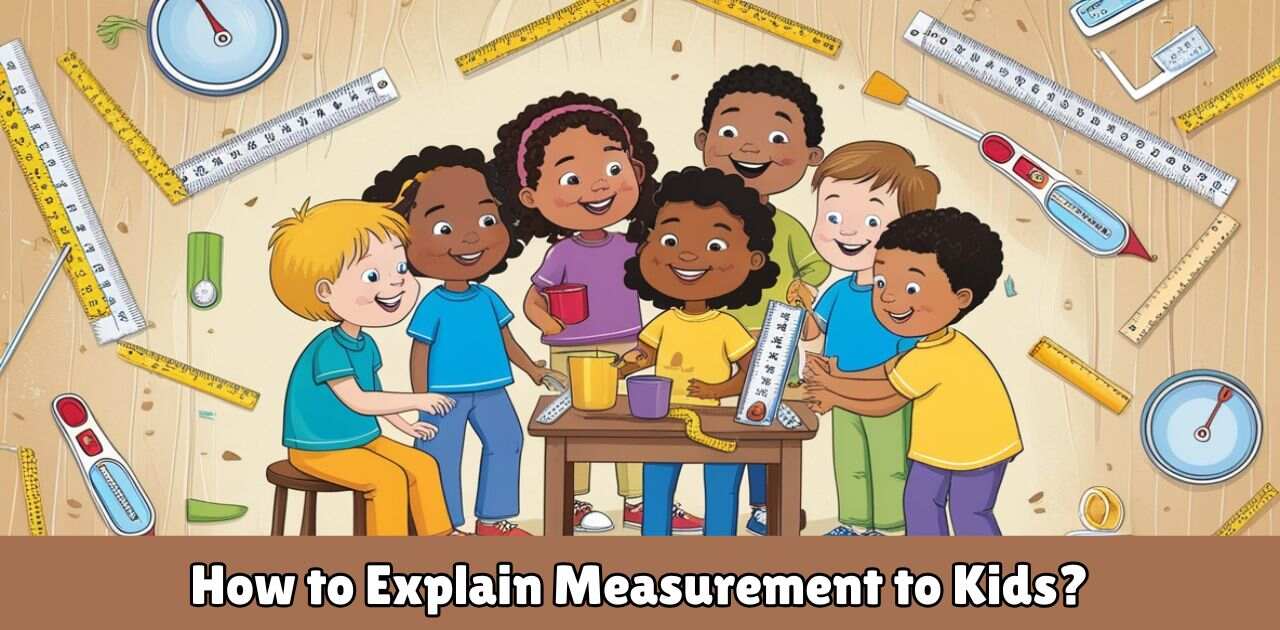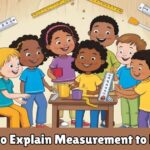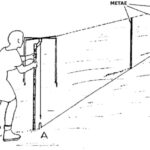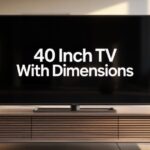Your 4-year-old lines up their toys from biggest to smallest. Your 6-year-old argues that their cookie is bigger than their sibling’s. Your 8-year-old helps you measure flour for pancakes. Guess what? They’re already learning measurement concepts without realizing it.
Most parents panic when they think about teaching measurement formally. You picture complicated worksheets, confusing rulers, and frustrated tears. But here’s the truth – understanding measurement happens naturally when kids explore their world through comparing objects, hands-on activities, and real-life experiences.
The secret isn’t perfect lessons or expensive tools. It’s recognizing that measurement skills develop through everyday moments when you cook together, build blanket forts, or race to see who’s fastest. Let’s explore how to turn these natural moments into powerful learning experiences.
How Children’s Brains Actually Learn Measurement?
Piaget’s theory reveals something fascinating about how kids think about measurement. During the pre-operational stage (ages 2-7), children focus on one thing at a time. They might think a tall, skinny glass holds more juice than a short, wide cup. This isn’t wrong thinking – it’s how their developing brains work.
Cognitive development in measurement happens in predictable stages. First, kids learn through direct comparison – “This block is bigger than that one.” Then they count objects as measuring units – “The table is five blocks long.” Finally, they understand abstract standard units like inches and pounds.
Working memory limitations mean young children can only juggle a few ideas at once. This explains why breaking measurement into small, manageable chunks works better than overwhelming them with complex concepts. When you understand these natural brain patterns, you can work with your child’s development instead of against it.
Real Ages and Stages That Actually Matter

Ages 3-5 focus on comparative understanding through natural play. Your preschooler compares everything – tower heights, cookie sizes, who’s taller. Use descriptive words like big/small, long/short, and heavy/light during everyday conversations. Let them sort toys by size, stack blocks, and feel different textures.
Ages 5-7 transition to non-standard units like paper clips, blocks, or their own feet. Kids can now count objects in a line to measure length. They might announce “The book is 8 paper clips long” with genuine pride. This stage bridges comparison and formal measurement beautifully.
Ages 7+ are ready for rulers, measuring tapes, and standard units like inches, feet, and cups. Spatial reasoning develops rapidly, allowing kids to visualize relationships between measurements. They notice that 12 inches equals 1 foot or understand why we need consistent units for clear communication.
The Four Types of Measurement Your Child Needs to Know
Length and distance measurement starts with your child’s body as the measuring tool. Their foot length, hand span, and arm reach become personal measuring standards. Have them measure their bed using their feet or count hand spans across their desk. This makes measurement meaningful and memorable.
Weight and mass concepts click when kids physically feel differences. Let them hold a feather and a rock, then guess which weighs more before checking with a scale. Volume and capacity come alive during bath time water play or kitchen ingredient measuring. They discover that containers can look different but hold the same amount.
Time measurement happens naturally throughout your daily routine. “We’ll leave in 10 minutes” or “Dinner takes one hour to cook” builds time awareness. Area and perimeter start simple – tracing shapes with their finger around book covers or calculating how much wrapping paper needed for gifts.
Teaching Rules That Actually Work
When using non-standard units, four simple rules prevent confusion and build logical thinking. All units must be the same size – no mixing giant blocks with tiny ones. Units should touch without overlapping, like train cars connecting. They need to form a straight line from start to finish, covering the entire object being measured.
These aren’t arbitrary rules – they teach the logic behind all measurement. When your child understands why consistent units matter, they’re ready to appreciate standard units of measurement that everyone uses. This foundation prevents common measurement misconceptions that develop when kids skip these fundamentals.
Keep measurement activities short and focused. Young children’s attention spans and working memory are limited. Five successful 10-minute measurement experiences beat one frustrating 30-minute lesson that ends in tears or resistance.
Methods That Make Measurement Stick
Hands-on activities work because measurement is inherently physical. Create measurement scavenger hunts where kids find objects matching specific lengths or weights. Let them be measurement detectives, discovering which household items are longer than their arm or heavier than their backpack.
Recipe measurement activities combine multiple measurement types in one engaging project. Kids measure ingredients by volume, monitor cooking time, check temperatures, and calculate servings. The delicious results make learning memorable and meaningful.
Real-world applications beat worksheets every time. Involve children in home projects where they measure fabric for curtains, calculate paint needed for walls, or plan garden layouts. These authentic experiences show why measurement matters beyond school assignments.
Essential Tools and Smart Technology Integration
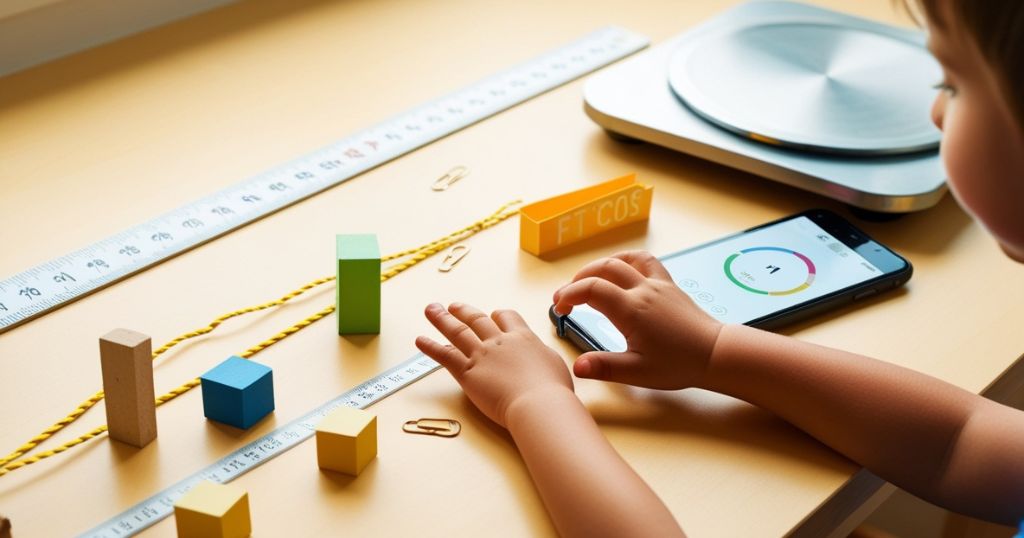
Start with everyday objects before buying special measurement tools. Blocks, paper clips, string, and kitchen measuring cups work perfectly for beginning experiences. Your child’s body provides the most meaningful measuring tools – their foot, hand span, and height.
Rulers and scales become important as children transition to standard units. Choose simple, clear tools without confusing multiple markings. A basic ruler showing just inches or just centimeters works better than one mixing both systems.
Digital measuring apps and AR measurement tools fascinate kids but should supplement, not replace, hands-on experiences. Interactive measuring tools work well for practice and review. Technology integration succeeds when it supports rather than dominates measurement learning.
Building Measurement Vocabulary Naturally
Measurement vocabulary grows through everyday conversations. Instead of just “big” or “small,” use precise comparative terms like “longer than,” “shorter than,” “heavier than,” and “lighter than.” This builds the language foundation kids need for mathematical thinking.
Time vocabulary develops through daily routines. Use words like before, after, next, today, tomorrow, morning, afternoon, and evening naturally. “We’ll visit grandma after lunch” or “Yesterday we measured your plant” gives practice with time relationships.
Progressive vocabulary building works best. Master big/small and long/short before introducing complex terms. Visual learning tools like measurement charts and picture cards reinforce new vocabulary without overwhelming young learners.
Read Also: What Units of Measurement Did The Romans Use? Standards of an Empire
Connecting Measurement Across Subject Areas
Science projects naturally incorporate measurement when children track plant growth, record weather data, or measure animal habitats. Environmental data collection teaches both measurement skills and environmental awareness. Engineering concepts become accessible when kids build structures requiring precise measurements.
Art projects involve area and perimeter when planning paper sizes or calculating material needs. Social studies connections happen when exploring how different cultures measured things – ancient Egyptian cubits, Roman foot measurements, or Indigenous measurement systems.
Technology integration includes measurement apps, 3D printing projects requiring precision, and robotics activities involving distance and time calculations. Cross-curricular integration shows children that measurement isn’t just math – it’s everywhere.
Supporting Different Learning Styles and Special Needs
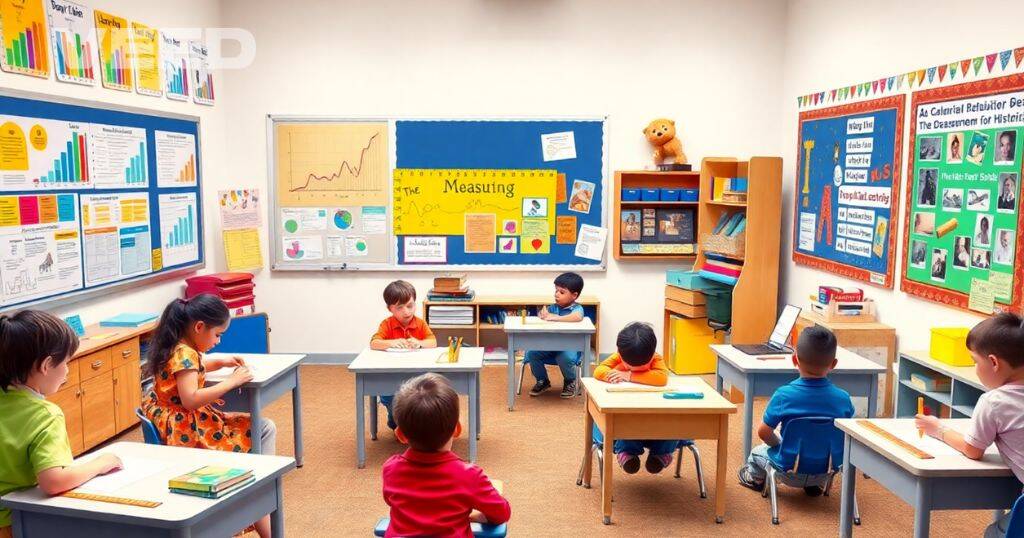
Visual learners need charts and graphs, colorful measuring equipment, and visual comparison tools. Create measurement displays showing relationships between units. Kinesthetic learners thrive with movement-based activities – pacing distances, using their bodies as tools, and manipulating objects.
Auditory learners benefit from measurement songs, verbal explanations, and discussing their thinking process. Musical approaches include rhythm-based learning and chants about unit relationships. Logical-mathematical thinkers enjoy discovering patterns in measurement data.
English Language Learners (ELLs) need visual supports, peer collaboration, and connections to familiar cultural measurement systems. ADHD-friendly strategies include shorter activities, movement breaks, and clear visual organization. Gifted and talented students benefit from complex projects and historical measurement research.
Assessment That Reveals Real Understanding
Informal assessment happens through observation and conversation. Watch how your child approaches measurement tasks and listen to their explanations. Ask revealing questions like “How did you know that block was longer?” or “What would happen if we used bigger units?”
Performance-based assessment through authentic tasks shows genuine understanding. Can they measure recipe ingredients accurately? Help plan a garden layout? Calculate paint needed for their bedroom? These practical applications reveal more than worksheet problems ever could.
Self-reflection journals help older children process their learning. They can write or draw about measurement discoveries, challenges faced, and successful strategies. Digital portfolios document growth over time and build confidence in their developing abilities.
Solving Common Measurement Challenges
Abstract concept understanding struggles happen when children jump to standard units too quickly. Always start with concrete, physical experiences before introducing numbers on paper. Let them extensively touch, handle, and compare objects before formal measuring tools.
Unit confusion between inches and feet or ounces and pounds is completely normal. Teach English measurements and metric measurements separately initially. Introduce conversions only when both systems are solid. Error analysis helps kids understand mistakes and learn from them.
Measurement misconceptions develop when learning feels disconnected from real life. Connect every activity to something meaningful – measuring their bedroom for furniture, calculating favorite recipe ingredients, or tracking their height growth over time.
Creating Measurement-Rich Learning Environments
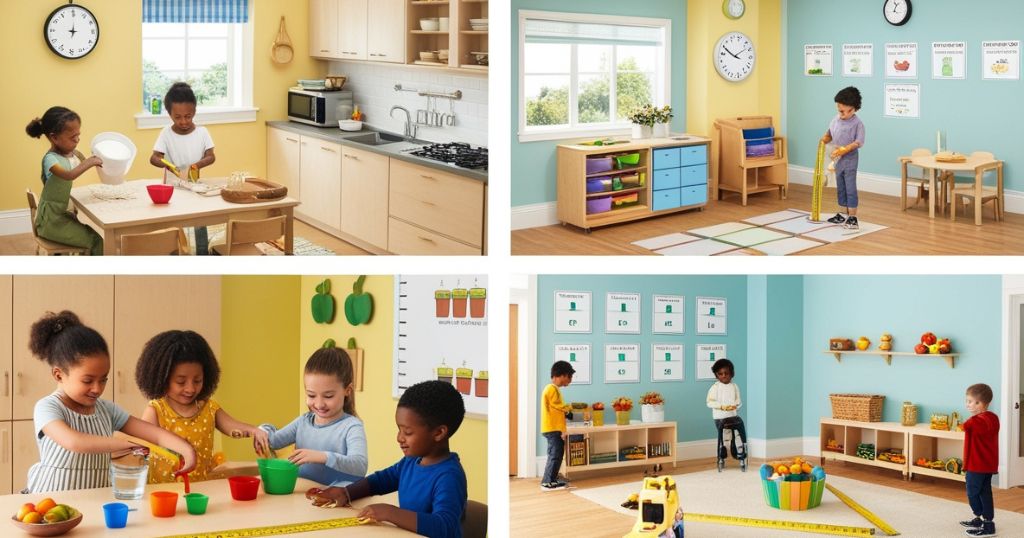
Home measurement opportunities exist everywhere. Kitchen activities involve volume and capacity. Household measurement routines include timing activities, measuring spaces, and comparing sizes. Morning routines naturally incorporate time measurement and comparison activities.
Classroom measurement centers should include diverse measurement tools, recording materials, and interesting objects to measure. Rotate materials regularly to maintain engagement. Include reference materials like conversion charts and vocabulary cards for independent work support.
Environmental setup matters for success. Create dedicated measurement spaces where children can work without interruption. Visual supports help remember procedures and vocabulary. Adaptive tools ensure all children can participate regardless of physical abilities.
Building Home-School-Community Connections
Parent education focuses on recognizing existing measurement opportunities rather than creating extra work. Share simple ways to incorporate measurement into daily routines – cooking together, planning projects, or tracking family activities.
Community involvement brings measurement to life through connections with local businesses, museums, and science centers. Professional visits from engineers, architects, and artisans show children how measurement matters in real careers and adult life.
Home-school collaboration strengthens when parents understand what children are learning and how to support it naturally. Communication goes both ways – teachers learn about home measurement experiences while parents understand school learning goals.
Future-Ready Measurement Skills
STEM integration naturally includes measurement in design challenges, robotics projects, and scientific investigations. 3D printing projects require precise measurements and show kids how accuracy matters in real applications. Data logging tools help children track measurements over time and identify patterns.
Global competency includes understanding both metric and English measurements and knowing when each system is appropriate. Children who master multiple measurement systems are better prepared for our interconnected world and future educational opportunities.
Environmental awareness develops through measurement activities focused on conservation, waste reduction, and resource management. AI tutoring for math and personalized learning platforms offer customized measurement practice opportunities.
Making It All Work: Your Implementation Plan
Start small with one measurement activity per week rather than overwhelming yourself or your child. Baking projects work beautifully because they naturally combine multiple measurement types and produce motivating, delicious results everyone enjoys.
Scaffolding techniques help children gradually take more responsibility. Begin with maximum support, modeling your thinking process aloud. Gradually reduce help as children become more confident and capable. Ongoing monitoring helps adjust instruction based on individual needs and interests.
Documentation doesn’t have to be formal. Take photos of measurement projects, save examples of their work, and note breakthrough moments. These records help you see progress that might not be obvious day-to-day and celebrate growth appropriately.
FAQ’s: Your Most Pressing Questions Answered
My child gets frustrated with measurement activities. What should I do?
Step back to more concrete, hands-on activities with comparing objects. Keep sessions shorter and celebrate small successes. Frustration often signals that concepts are too abstract for their current developmental stage.
Should I worry if my 6-year-old still struggles with standard units?
Not at all. Developmental stages vary significantly between children. Focus on non-standard units and comparison activities until they show readiness for formal measurement tools. Rushing creates confusion and anxiety.
How do I know if my child has a learning disability affecting measurement?
Consistent struggles with spatial reasoning, persistent unit confusion despite adequate instruction, or significant difficulty with number sense might indicate learning disabilities like dyscalculia. Consult educational professionals for proper evaluation.
What’s the most important measurement concept for young children?
Comparative understanding – the ability to compare objects directly and use appropriate vocabulary. This foundation supports all future measurement learning and develops naturally through play and exploration.
How can busy parents fit measurement learning into daily life?
Focus on natural opportunities that already exist – cooking together, getting dressed, timing activities, and organizing spaces. Measurement skills develop through meaningful daily experiences, not separate lesson time.
Important Note: This educational guide provides general information based on child development theories and teaching practices. It’s not professional advice or a substitute for individualized educational support. Consult licensed professionals for specific learning difficulties or developmental concerns.
References or Sources:
- Measurement Lesson for Kids – Study
- Measurement for kids: Measuring length, distance, and heights – ScratchGarden
- Piaget’s stages of cognitive development – Medical News Today
- How to Teach Measurement: Measuring Activities for Kids – Alphapals
- 15 Best Hands-On Measurement Activities for Kids – Splash Learn

Hi there! I’m Jack, the writer of Punscraft.com. I’ve been writing and breaking down real-world measurements for over 7 years and I still love helping people see the size behind the numbers.
On Punscraft, we make inches, feet, and centimeters easy to understand by comparing them to everyday objects you already know. Whether you’re trying to picture how big 20 inches is or what’s actually 100 feet long, I’ve got you covered with fun, simple, and visual guides.
I like to keep things clear, relatable, and packed with useful facts like conversation with a companion who’s good with a tape measure.
If you’ve ever wondered “How big is that really?”, then you’re in the right place.
Thanks for stopping by Punscraft.com. Let’s make measuring make sense together!
